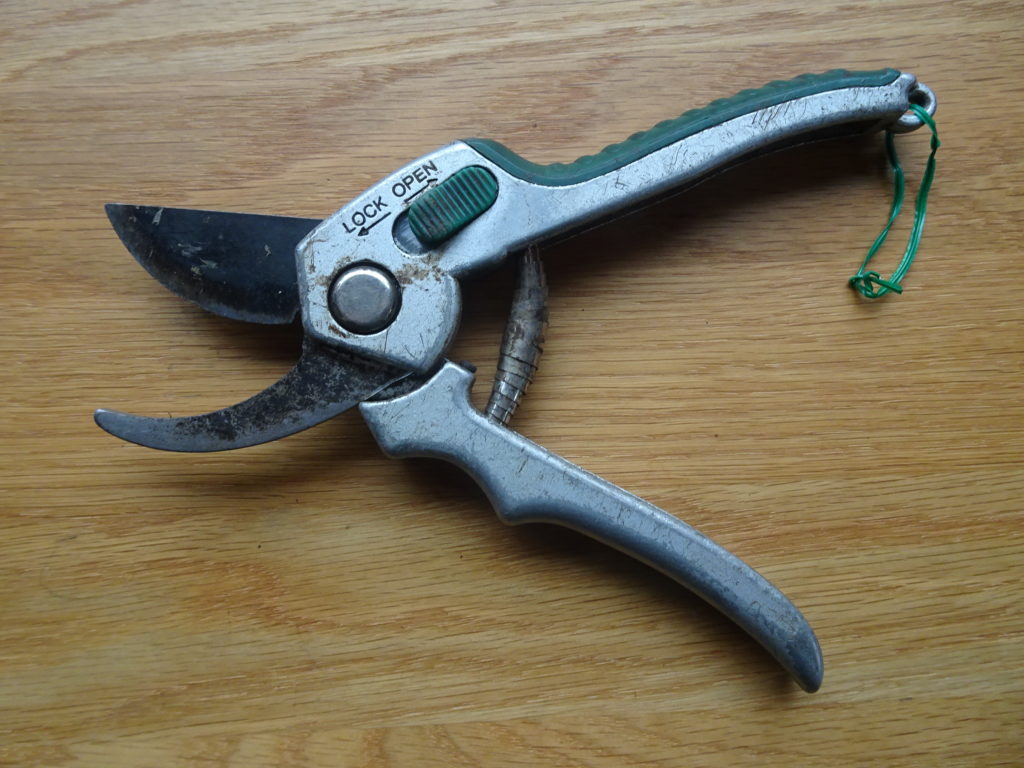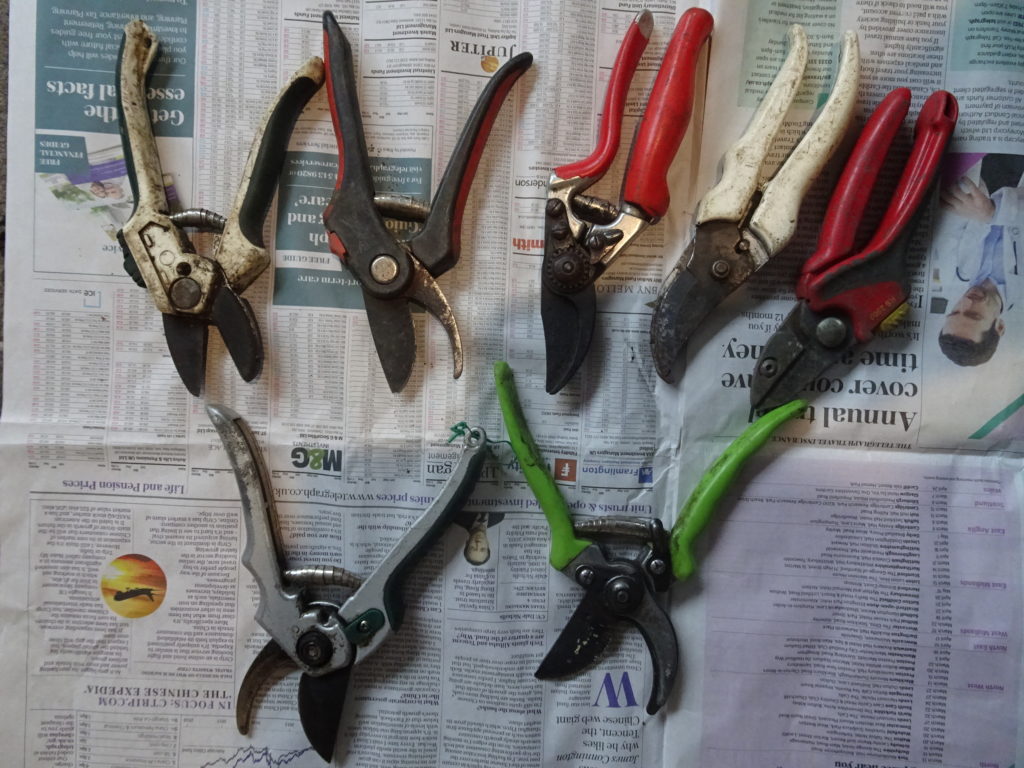Secateurs and Why I Choose Them
Secateurs are an indispensable tool for the the tidy minded gardener and even me.

 Ergonomic Features to Look For on Secateurs
- I like to be able to find the secateurs when I inevitably put them down despite the intentions of keeping them about my person. I good bright colour for the handles helps. I have lime green and red on my two favourite pairs and surprisingly the lime green stands out even amongst leaves and foliage.
- On a similar ‘ability to find theme’ I like the pair with a small loop at the end of one handle with a hole drilled in. This allows a string or wire to be fed through to facilitate hanging them in a suitable location.
- The grips should be moulded for fingers so a good purchase and transfer of power can be distributed. On my right handed secateurs the blade section has 4 finger grooves and the other handle is curved for the thumb and palm without a groove.
- The grips are often some form of rubberised or hard plastic which I find preferable to bare metal that strikes cold.
- Most secateurs have a thumb operated locking facility to keep them closed and safe when not in use. The idea is sound but you need to be able to operate this with the thumb of the same hand. A fiddly or unsafe device can be very frustrating.

Selected Secateurs
 Functional Features to Look For on Secateurs
- There are two basic options for the blades to bypass one another in a scissor type motion or for the blade to cut then hit an anvil like a chopping board. I like the bypass or parrot nosed version for the majority of soft wood and stem cutting. I find that leaves the plant wound less prone to damage. The anvil approach is good for twigs and dryer material.
- The blade and access to keep it sharp are key features. When buying new secateurs look for the best you can afford but focus on the blade.
- At the base of the blade at the junction of the other arm there is normally a notch that can be used to cut tough items like wire.
- The return (compression) spring to open the secateurs after every cut is generally held in place by two holes or protuberances near the top of each handle. They are key to the functionality and fun of using your secateurs and if they spring loose you can spend ages looking for them. Keep them oiled and clean and if necessary stretch them to make a tighter fit.
- Blade replacements are faffy and I find it hard to locate supplies. Why don’t manufacturers supply spares with new secateurs.
- A Falco branded pair have a finger side handle that twists a quarter turn as you operate. I like this but am not sure it stops repetitive strain injury as I assume was the intention. I wont know unless I buy a new pair as this feature disabled itself and no longer works.
-
I have not used ratchet or geared secateurs that cut in a number of stages but find that useful on my loppers.

Well used anvil secateurs
My Experience Using Secateurs
- There is a tendency to want to twist when cutting tough stems. This sprains the scissor action out of alignment and can cause irreparable damage. I have done this with many cheap pairs before I knew better.
- As you can see I have numerous pairs that are not all that clean. I do oil them and try to remember to wipe excess sap off the blades.
- I have a sharpening stone that I use frequently. I once sharpened the inner bit of the blade and then you could see light through where gap should be. Sharpen the external edge.
- For cutting thicker stems use a lopper or more robust shears.
- I have a good pair that occasionally nip the skin as I close them. As well as painful and frustrating I am also put out by having forgotten the makers name!